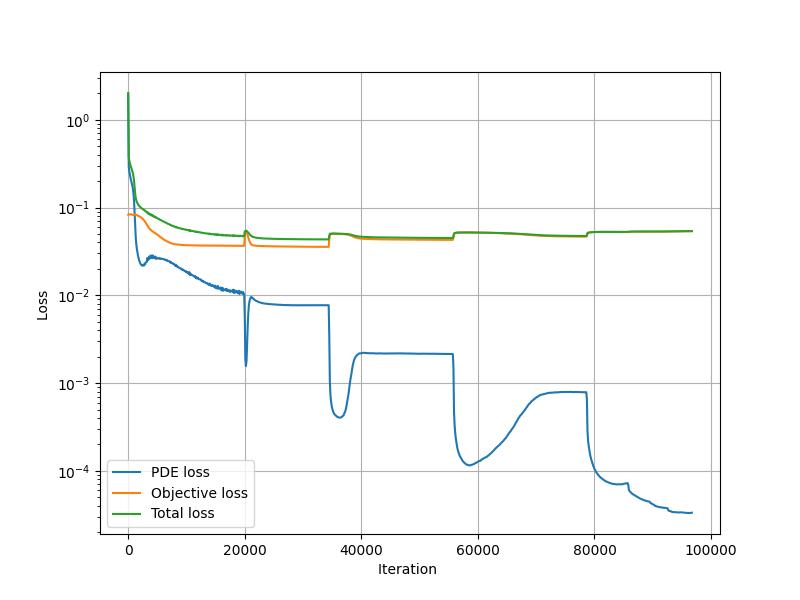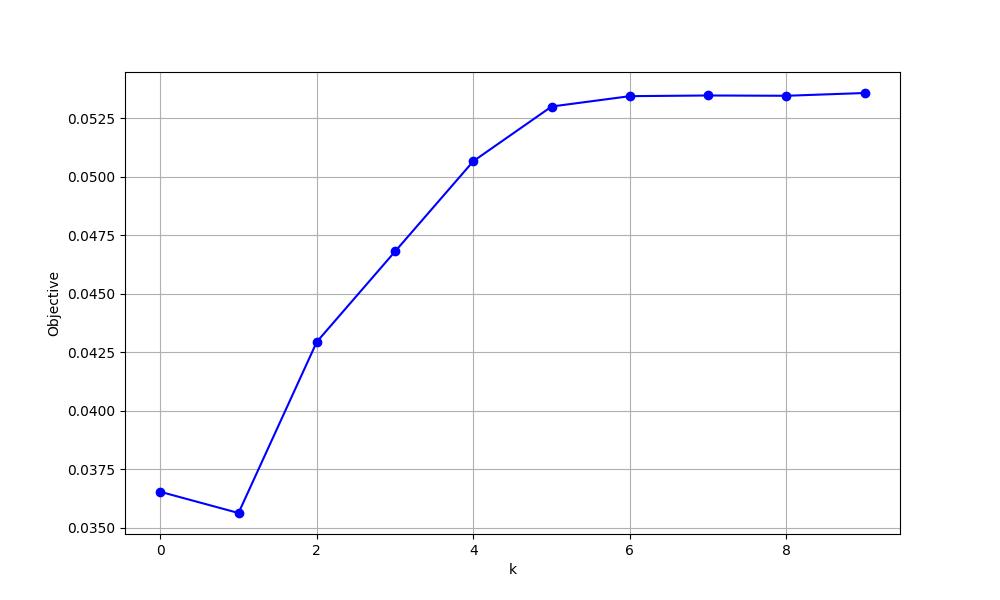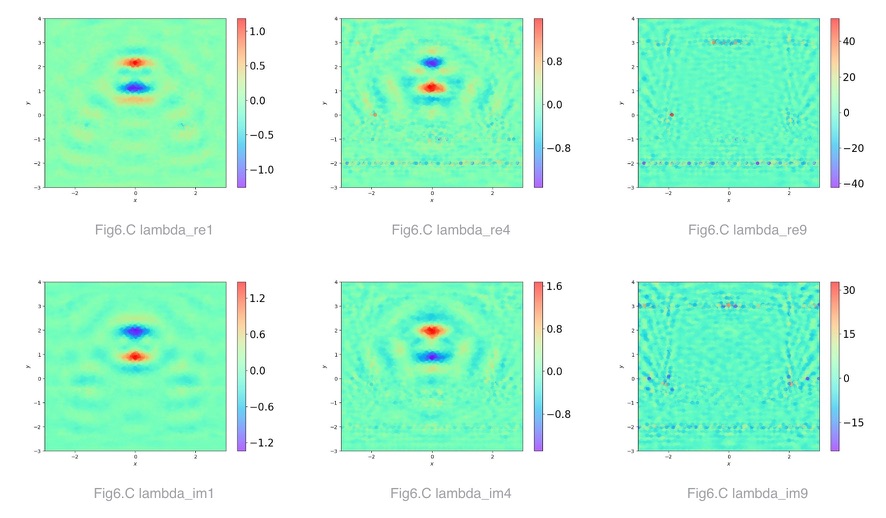hPINNs(PINN with hard constraints)¶
# linux
wget https://paddle-org.bj.bcebos.com/paddlescience/datasets/hPINNs/hpinns_holo_train.mat -P ./datasets/
wget https://paddle-org.bj.bcebos.com/paddlescience/datasets/hPINNs/hpinns_holo_valid.mat -P ./datasets/
# windows
# curl https://paddle-org.bj.bcebos.com/paddlescience/datasets/hPINNs/hpinns_holo_train.mat --output ./datasets/hpinns_holo_train.mat
# curl https://paddle-org.bj.bcebos.com/paddlescience/datasets/hPINNs/hpinns_holo_valid.mat --output ./datasets/hpinns_holo_valid.mat
python holography.py
# linux
wget https://paddle-org.bj.bcebos.com/paddlescience/datasets/hPINNs/hpinns_holo_train.mat -P ./datasets/
wget https://paddle-org.bj.bcebos.com/paddlescience/datasets/hPINNs/hpinns_holo_valid.mat -P ./datasets/
# windows
# curl https://paddle-org.bj.bcebos.com/paddlescience/datasets/hPINNs/hpinns_holo_train.mat --output ./datasets/hpinns_holo_train.mat
# curl https://paddle-org.bj.bcebos.com/paddlescience/datasets/hPINNs/hpinns_holo_valid.mat --output ./datasets/hpinns_holo_valid.mat
python holography.py mode=eval EVAL.pretrained_model_path=https://paddle-org.bj.bcebos.com/paddlescience/models/hPINNs/hpinns_pretrained.pdparams
| 预训练模型 | 指标 |
|---|---|
| hpinns_pretrained.pdparams | loss(opt_sup): 0.05352 MSE.eval_metric(opt_sup): 0.00002 loss(val_sup): 0.02205 MSE.eval_metric(val_sup): 0.00001 |
1. 背景简介¶
求解偏微分方程(PDE) 是一类基础的物理问题,在过去几十年里,以有限差分(FDM)、有限体积(FVM)、有限元(FEM)为代表的多种偏微分方程组数值解法趋于成熟。随着人工智能技术的高速发展,利用深度学习求解偏微分方程成为新的研究趋势。PINNs(Physics-informed neural networks) 是一种加入物理约束的深度学习网络,因此与纯数据驱动的神经网络学习相比,PINNs 可以用更少的数据样本学习到更具泛化能力的模型,其应用范围包括但不限于流体力学、热传导、电磁场、量子力学等领域。
传统的 PINNs 网络中的约束都是软约束,即 PDE(偏微分方程) 作为 loss 项参与网络训练。而本案例 hPINNs 通过修改网络输出的方法,将约束严格地加入网络结构中,形成一种更有效的硬约束。
同时 hPINNs 设计了不同的约束组合,进行了软约束、带正则化的硬约束和应用增强的拉格朗日硬约束 3 种条件下的实验。本文档主要针对应用增强的拉格朗日方法的硬约束进行说明,但完整代码中可以通过 train_mode 参数来切换三种训练模式。
本问题可参考 AI Studio题目.
2. 问题定义¶
本问题使用 hPINNs 解决基于傅立叶光学的全息领域 (holography) 的问题,旨在设计散射板的介电常数图,这种方法使得介电常数图散射光线的传播强度具备目标函数的形状。
objective 函数:
其中E为电场强度:\(\vert E\vert^2 = (\mathfrak{R} [E])^2+(\mathfrak{I} [E])^2\)
target 函数:
PDE公式:
3. 问题求解¶
接下来开始讲解如何将问题一步一步地转化为 PaddleScience 代码,用深度学习的方法求解该问题。为了快速理解 PaddleScience,接下来仅对模型构建、约束构建等关键步骤进行阐述,而其余细节请参考 API文档。
3.1 数据集介绍¶
数据集为处理好的 holography 数据集,包含训练、测试数据的 \(x, y\) 以及表征 optimizer area 数据与全区域数据分界的值 \(bound\),以字典的形式存储在 .mat 文件中。
运行本问题代码前请按照下方命令下载 训练数据集 和 验证数据集:
wget -P ./datasets/ https://paddle-org.bj.bcebos.com/paddlescience/datasets/hPINNs/hpinns_holo_train.mat
wget -P ./datasets/ https://paddle-org.bj.bcebos.com/paddlescience/datasets/hPINNs/hpinns_holo_valid.mat
3.2 模型构建¶
holograpy 问题的模型结构图为:
在 holography 问题中,应用 PMLs(perfectly matched layers) 方法后,PDE公式变为:
PMLs 方法请参考 相关论文。
本问题中频率 \(\omega\) 为常量 \(\dfrac{2\pi}{\mathcal{P}}\)(\(\mathcal{P}\) 为Period),待求解的未知量 \(E\) 与位置参数 \((x, y)\) 相关,在本例中,介电常数 \(\varepsilon\) 同样为未知量, \(\sigma_x(x)\) 和 \(\sigma_y(y)\) 为由 PMLs 得到的,分别与 \(x, y\) 相关的变量。我们在这里使用比较简单的 MLP(Multilayer Perceptron, 多层感知机) 来表示 \((x, y)\) 到 \((E, \varepsilon)\) 的映射函数 \(f: \mathbb{R}^2 \to \mathbb{R}^2\) ,但如上图所示的网络结构,本问题中将 \(E\) 按照实部和虚部分为两个部分 \((\mathfrak{R} [E],\mathfrak{I} [E])\),且使用 3 个并行的 MLP 网络分别对 \((\mathfrak{R} [E], \mathfrak{I} [E], \varepsilon)\) 进行映射,映射函数 \(f_i: \mathbb{R}^2 \to \mathbb{R}^1\) ,即:
上式中 \(f_1,f_2,f_3\) 分别为一个 MLP 模型,三者共同构成了一个 Model List,用 PaddleScience 代码表示如下
为了在计算时,准确快速地访问具体变量的值,我们在这里指定网络模型的输入变量名是 ("x_cos_1","x_sin_1",...,"x_cos_6","x_sin_6","y","y_cos_1","y_sin_1") ,输出变量名分别是 ("e_re",), ("e_im",), ("eps",)。
注意到这里的输入变量远远多于 \((x, y)\) 这两个变量,这是因为如上图所示,模型的输入实际上是 \((x, y)\) 傅立叶展开的项而不是它们本身。而数据集中提供的训练数据为 \((x, y)\) 值,这也就意味着我们需要对输入进行 transform。同时如上图所示,由于硬约束的存在,模型的输出变量名也不是最终输出,因此也需要对输出进行 transform。
3.3 transform构建¶
输入的 transform 为变量 \((x, y)\) 到 \((\cos(\omega x),\sin(\omega x),...,\cos(6 \omega x),\sin(6 \omega x),y,\cos(\omega y),\sin(\omega y))\) 的变换,输出 transform 分别为对 \((\mathfrak{R} [E], \mathfrak{I} [E], \varepsilon)\) 的硬约束,代码如下
需要对每个 MLP 模型分别注册相应的 transform ,然后将 3 个 MLP 模型组成 Model List
这样我们就实例化出了一个拥有 3 个 MLP 模型,每个 MLP 包含 4 层隐藏神经元,每层神经元数为 48,使用 "tanh" 作为激活函数,并包含输入输出 transform 的神经网络模型 model list。
3.4 参数和超参数设定¶
我们需要指定问题相关的参数,如通过 train_mode 参数指定应用增强的拉格朗日方法的硬约束进行训练
由于应用了增强的拉格朗日方法,参数 \(\mu\) 和 \(\lambda\) 不是常量,而是随训练轮次 \(k\) 改变,此时 \(\beta\) 为改变的系数,即每轮训练
\(\mu_k = \beta \mu_{k-1}\), \(\lambda_k = \beta \lambda_{k-1}\)
同时需要指定训练轮数和学习率等超参数
3.5 优化器构建¶
训练分为两个阶段,先使用 Adam 优化器进行大致训练,再使用 LBFGS 优化器逼近最优点,因此需要两个优化器,这也对应了上一部分超参数中的两种 EPOCHS 值
3.6 约束构建¶
本问题采用无监督学习的方式,约束为结果需要满足PDE公式。
虽然我们不是以监督学习方式进行训练,但此处仍然可以采用监督约束 SupervisedConstraint,在定义约束之前,需要给监督约束指定文件路径等数据读取配置,因为数据集中没有标签数据,因此在数据读取时我们需要使用训练数据充当标签数据,并注意在之后不要使用这部分“假的”标签数据。
如上,所有输出的标签都会读取输入 x 的值。
下面是约束等具体内容,要注意上述提到的给定“假的”标签数据:
SupervisedConstraint 的第一个参数是监督约束的读取配置,其中 “dataset” 字段表示使用的训练数据集信息,各个字段分别表示:
name: 数据集类型,此处"IterableMatDataset"表示不分 batch 顺序读取的.mat类型的数据集;file_path: 数据集文件路径;input_keys: 输入变量名;label_keys: 标签变量名;alias_dict: 变量别名。
第二个参数是损失函数,此处的 FunctionalLoss 为 PaddleScience 预留的自定义 loss 函数类,该类支持编写代码时自定义 loss 的计算方法,而不是使用诸如 MSE 等现有方法,本问题中由于存在多个 loss 项,因此需要定义多个 loss 计算函数,这也是需要构建多个约束的原因。自定义 loss 函数代码请参考 自定义 loss 和 metric 。
第三个参数是方程表达式,用于描述如何计算约束目标,此处填入 output_expr,计算后的值将会按照指定名称存入输出列表中,从而保证 loss 计算时可以使用这些值。
第四个参数是约束条件的名字,我们需要给每一个约束条件命名,方便后续对其索引。
在约束构建完毕之后,以我们刚才的命名为关键字,封装到一个字典中,方便后续访问。
3.7 评估器构建¶
与约束同理,虽然本问题使用无监督学习,但仍可以使用 ppsci.validate.SupervisedValidator 构建评估器。本问题存在两个采样点区域,一个是较大的完整定义区域,另一个是定义域中的一块 objective 区域,评估器分别对这两个区域进行评估,因此需要构建两个评估器。opt对应 objective 区域,val 对应整个定义域。
评价指标 metric 为 FunctionalMetric,这是 PaddleScience 预留的自定义 metric 函数类,该类支持编写代码时自定义 metric 的计算方法,而不是使用诸如 MSE、 L2 等现有方法。自定义 metric 函数代码请参考下一部分 自定义 loss 和 metric 。
其余配置与 约束构建 的设置类似。
3.8 自定义 loss 和 metric¶
由于本问题采用无监督学习,数据中不存在标签数据,loss 和 metric 根据 PDE 计算得到,因此需要自定义 loss 和 metric。方法为先定义相关函数,再将函数名作为参数传给 FunctionalLoss 和 FunctionalMetric。
需要注意自定义 loss 和 metric 函数的输入输出参数需要与 PaddleScience 中如 MSE 等其他函数保持一致,即输入为模型输出 output_dict 等字典变量,loss 函数输出为 loss 值 paddle.Tensor,metric 函数输出为字典 Dict[str, paddle.Tensor]。
237 238 239 240 241 242 243 244 245 246 247 248 249 250 251 252 253 254 255 256 257 258 259 260 261 262 263 264 265 266 267 268 269 270 271 272 273 274 275 276 277 278 279 280 281 282 283 284 285 286 287 288 289 290 291 292 293 294 295 296 297 298 299 300 301 302 303 304 305 306 307 308 309 310 311 312 313 314 315 316 317 | |
3.9 模型训练、评估¶
完成上述设置之后,只需要将上述实例化的对象按顺序传递给 ppsci.solver.Solver,然后启动训练、评估。
由于本问题存在多种训练模式,根据每个模式的不同,将进行 \([2,1+k]\) 次完整的训练、评估,具体代码请参考 完整代码 中 holography.py 文件。
3.10 可视化¶
PaddleScience 中提供了可视化器,但由于本问题图片数量较多且较为复杂,代码中自定义了可视化函数,调用自定义函数即可实现可视化
自定义代码请参考 完整代码 中 plotting.py 文件。
4. 完整代码¶
完整代码包含 PaddleScience 具体实现流程代码 holography.py,所有自定义函数代码 functions.py 和 自定义可视化代码 plotting.py。
| holography.py | |
|---|---|
1 2 3 4 5 6 7 8 9 10 11 12 13 14 15 16 17 18 19 20 21 22 23 24 25 26 27 28 29 30 31 32 33 34 35 36 37 38 39 40 41 42 43 44 45 46 47 48 49 50 51 52 53 54 55 56 57 58 59 60 61 62 63 64 65 66 67 68 69 70 71 72 73 74 75 76 77 78 79 80 81 82 83 84 85 86 87 88 89 90 91 92 93 94 95 96 97 98 99 100 101 102 103 104 105 106 107 108 109 110 111 112 113 114 115 116 117 118 119 120 121 122 123 124 125 126 127 128 129 130 131 132 133 134 135 136 137 138 139 140 141 142 143 144 145 146 147 148 149 150 151 152 153 154 155 156 157 158 159 160 161 162 163 164 165 166 167 168 169 170 171 172 173 174 175 176 177 178 179 180 181 182 183 184 185 186 187 188 189 190 191 192 193 194 195 196 197 198 199 200 201 202 203 204 205 206 207 208 209 210 211 212 213 214 215 216 217 218 219 220 221 222 223 224 225 226 227 228 229 230 231 232 233 234 235 236 237 238 239 240 241 242 243 244 245 246 247 248 249 250 251 252 253 254 255 256 257 258 259 260 261 262 263 264 265 266 267 268 269 270 271 272 273 274 275 276 277 278 279 280 281 282 283 284 285 286 287 288 289 290 291 292 293 294 295 296 297 298 299 300 301 302 303 304 305 306 307 308 309 310 311 312 313 314 315 316 317 318 319 320 321 322 323 324 325 326 327 328 329 330 331 332 333 334 335 336 337 338 339 340 341 342 343 344 345 346 347 348 349 350 351 352 353 354 355 356 357 358 359 360 361 362 363 364 365 366 367 368 369 370 371 372 373 374 375 376 377 378 379 380 381 382 383 384 385 386 387 388 389 390 391 392 393 394 395 396 397 398 399 400 401 402 403 404 405 406 407 408 409 410 411 412 413 414 415 416 417 418 419 420 421 422 423 | |
| functions.py | |
|---|---|
1 2 3 4 5 6 7 8 9 10 11 12 13 14 15 16 17 18 19 20 21 22 23 24 25 26 27 28 29 30 31 32 33 34 35 36 37 38 39 40 41 42 43 44 45 46 47 48 49 50 51 52 53 54 55 56 57 58 59 60 61 62 63 64 65 66 67 68 69 70 71 72 73 74 75 76 77 78 79 80 81 82 83 84 85 86 87 88 89 90 91 92 93 94 95 96 97 98 99 100 101 102 103 104 105 106 107 108 109 110 111 112 113 114 115 116 117 118 119 120 121 122 123 124 125 126 127 128 129 130 131 132 133 134 135 136 137 138 139 140 141 142 143 144 145 146 147 148 149 150 151 152 153 154 155 156 157 158 159 160 161 162 163 164 165 166 167 168 169 170 171 172 173 174 175 176 177 178 179 180 181 182 183 184 185 186 187 188 189 190 191 192 193 194 195 196 197 198 199 200 201 202 203 204 205 206 207 208 209 210 211 212 213 214 215 216 217 218 219 220 221 222 223 224 225 226 227 228 229 230 231 232 233 234 235 236 237 238 239 240 241 242 243 244 245 246 247 248 249 250 251 252 253 254 255 256 257 258 259 260 261 262 263 264 265 266 267 268 269 270 271 272 273 274 275 276 277 278 279 280 281 282 283 284 285 286 287 288 289 290 291 292 293 294 295 296 297 298 299 300 301 302 303 304 305 306 307 308 309 310 311 312 313 314 315 316 317 318 319 320 321 322 323 324 325 326 327 328 329 330 331 332 333 334 335 336 | |
| plotting.py | |
|---|---|
1 2 3 4 5 6 7 8 9 10 11 12 13 14 15 16 17 18 19 20 21 22 23 24 25 26 27 28 29 30 31 32 33 34 35 36 37 38 39 40 41 42 43 44 45 46 47 48 49 50 51 52 53 54 55 56 57 58 59 60 61 62 63 64 65 66 67 68 69 70 71 72 73 74 75 76 77 78 79 80 81 82 83 84 85 86 87 88 89 90 91 92 93 94 95 96 97 98 99 100 101 102 103 104 105 106 107 108 109 110 111 112 113 114 115 116 117 118 119 120 121 122 123 124 125 126 127 128 129 130 131 132 133 134 135 136 137 138 139 140 141 142 143 144 145 146 147 148 149 150 151 152 153 154 155 156 157 158 159 160 161 162 163 164 165 166 167 168 169 170 171 172 173 174 175 176 177 178 179 180 181 182 183 184 185 186 187 188 189 190 191 192 193 194 195 196 197 198 199 200 201 202 203 204 205 206 207 208 209 210 211 212 213 214 215 216 217 218 219 220 221 222 223 224 225 226 227 228 229 230 231 232 233 234 235 236 237 238 239 240 241 242 243 244 245 246 247 248 249 250 251 252 253 254 255 256 257 258 259 260 261 262 263 264 265 266 267 268 269 270 271 272 273 274 275 276 277 278 279 280 281 282 283 284 285 286 287 288 289 290 291 292 293 294 295 296 297 298 299 300 301 302 303 304 305 306 307 308 309 310 311 312 313 314 315 316 317 318 319 320 321 322 323 324 325 326 327 328 329 330 331 332 333 334 335 336 337 338 339 340 341 342 343 344 345 | |
5. 结果展示¶
参考 问题定义,下图展示了训练过程中 loss 变化、参数 lambda 和参数 mu 与增强的拉格朗日方法中训练论次 k 的变化、电场 E 和介电常数 epsilon 最终预测的值。
下图展示了对于一个定义的方形域内,电磁波传播的情况的预测。预测结果与有限差分频域(FDFD)方法的结果基本一致。
训练过程中的 loss 值变化:
objective loss 值随训练轮次 k 的变化:
k=1,4,9 时对应参数 lambda 实部和虚部的值:
参数 lambda 和参数 mu 的比值随训练轮次 k 的变化:
参数 lambda 和参数 mu 实部的比值随训练轮次 k=1,4,6,9 时出现的频率,曲线越“尖”说明值越趋于统一,收敛的越好:
参数 lambda 和参数 mu 虚部的比值随训练轮次 k=1,4,6,9 时出现的频率,曲线越“尖”说明值越趋于统一,收敛的越好:
电场 E 值:
介电常数 epsilon 值:
6. 参考文献¶
创建日期: November 6, 2023








